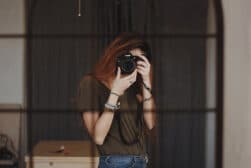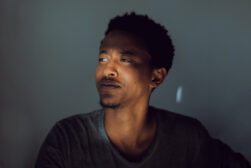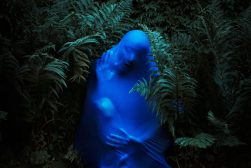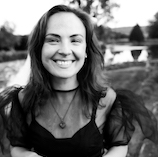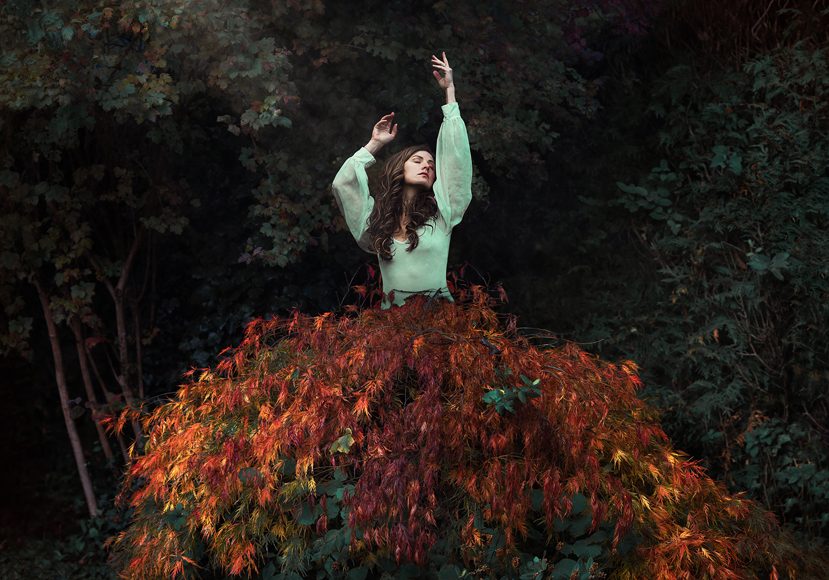
Creative Self-Portrait Photography on a Budget (With Examples)
Forget the elaborate sets and expensive costumes! Learn how to create artistic self-portraiture on a shoestring using everyday items.
When thinking of conceptual self-portrait photography you might be thinking: No way can I achieve or afford elaborate sets, specialist costumes or a team to help me create the kind of self-portraits I’ve seen in the past.
If that’s where your mind is at, I bear good news and hopefully some relief! You most definitely can accomplish professional quality and gallery-worthy imagery on a budget.
I need you to keep four things in mind: subject, props, costumes and location. Got it? Hold on to it for a moment!
Self-portrait photography can be extremely layered, and one of the many things it does very well is express the self. The self, of course, being you.
In essence, self-portraiture is an art form where you create a representation of yourself.
Conceptual self-portraiture, however, is another kind of beastie.
Far from traditional self-portraits, here we get to play with our surroundings to introduce a wide range of storytelling. Through the self-expression allowed in this genre, you can expose your emotions, beliefs, hopes, sorrows and everything in between.
But How Much Will It Cost?
Well, you can spend nothing at all to thousands to set up a photograph, depending on your imagination and the size of your wallet.
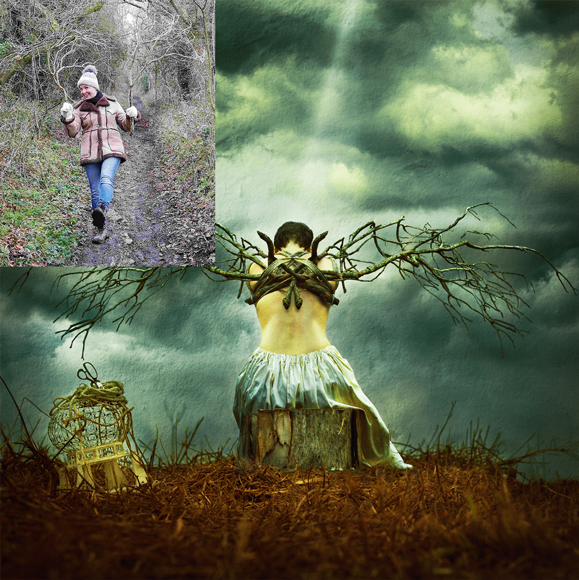
Free wings for ‘Seeking the lightness of freedom’ by Veronika Lavey
Personally speaking, I’ve never spent more than £30 on an image (this was a dress I can reuse over and over), and I tell you what – necessity really is the Mother of Invention.
Working with limited resources will have you looking at what’s available around you with added creativity.
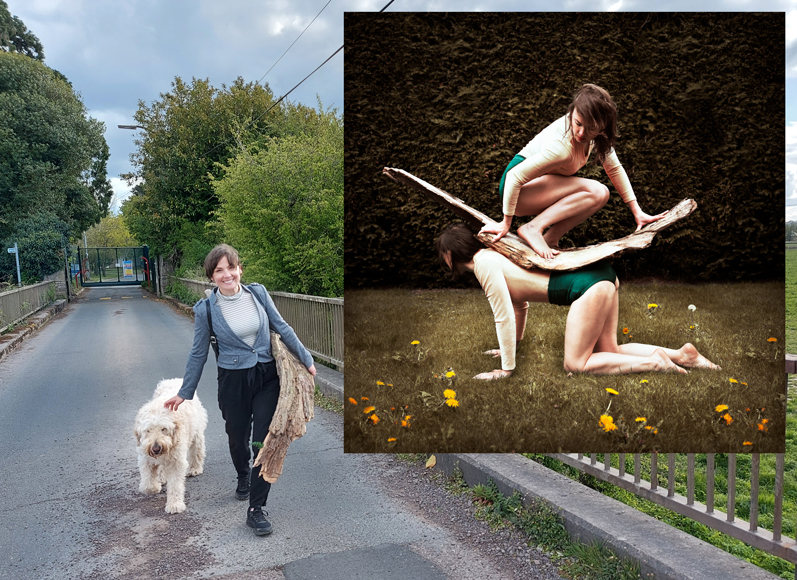
Free plank of wood found on the riverbank.
Full disclosure: while my image setup never costs an arm and a leg, over time I have invested in a Sony A7R III camera, a Sony G Master 24-70mm lens, a Wacom Cintiq Pro 32” monitor and I have a monthly subscription to Photoshop.
With that being said, you most definitely don’t have to have swanky expensive gear. I didn’t in the beginning of my self-portrait journey.
Most likely, the phone in your back pocket has enough megapixels to create gorgeous works of art.
I would still recommend Photoshop as your editing software though, purely because that’s what I use and can talk to you about. However, there are free photo editing programs out there, which could be brilliant to start out with.
Plan ahead
Remember those four things you’re mentally holding on to? Let’s bring them out again.
Subject, props, costumes and location.
These things are what you’ll need to plan to produce a successful conceptual self-portrait.
Hopefully, having now read my post 11 Tips for Capturing Authenticity in Self-Portrait Photography, you have a better understanding of the reasons behind why you’re creating your self-portrait and what story you want to convey with it.
What is the emotional reasoning behind the image? Are you telling a happy story or a sad one? Are you exploring social issues, your identity or your past?
What mood do you wish your audience to get from your photograph?
How Much Do You REALLY Know About Photography?! 🤔
Test your photography knowledge with this quick quiz!
See how much you really know about photography...

Each narrative comes with its own emotion that you can bring to the surface by choosing the right tools.
This understanding, combined with your “visual bank” (again, refer back to 11 Tips…) will give you a better idea of what aesthetic you’re going for.
It’s important to know, for example, if you want your story to be set in a particular, identifiable time or if you want it to appear timeless.
Subject
Finding a subject in your case is super easy. You’re the subject. Phew! That’s done and out of the way.
Props
Props can be anything that you intentionally include in your photograph to add a layer of meaning through symbolism.
I love symbolism in photography! So much can be said with so little.
Done thoughtfully and with a bit of research, your message will be understood across countries, cultures and language barriers.
You can find inexpensive or free items everywhere if you just look.
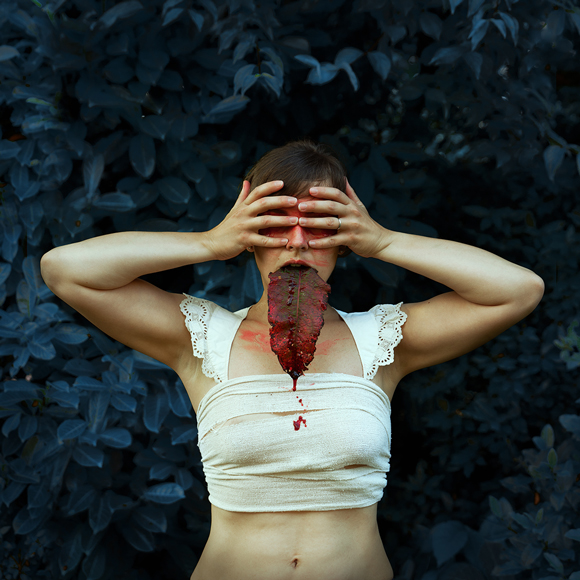
Staining silence by Veronika Lavey
I was on a walk with my dog, Sonic, when on a hillside I came across these massive, blood-red dock leaves. It was the gorgeous colour that made me stop to pick a couple.
It’s useful to learn to walk with an open mind and with your eyes peeled because you just never know where you might spot something that sparks your imagination.
Here, I immediately saw the leaf as a giant tongue, enlarged, freeing itself from having to be held in silence for so long. A courageous act to speak up, and sometimes the truth allowed to finally be spoken, hurts.
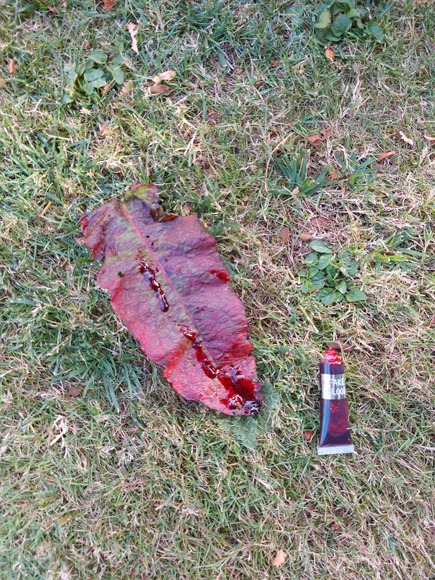
I bought a tube of fake blood from the local party supply shop for £2 (so much left over for future concepts!), wrapped myself in surgical bandages and a gifted vintage collar, and took to my garden to shoot a story most of us can probably relate to.

Lessons learnt by Veronika Lavey
My dad has always bought and sold old knick-knacks and on one occasion, when I was visiting my parents in Hungary, I came across a box of old scissors he bought at a flea market for about £5.
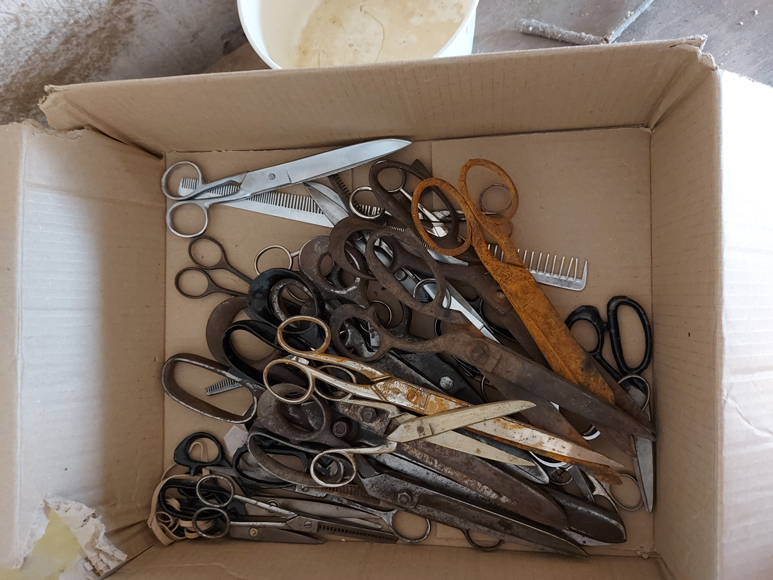
On seeing the potential, I set up a scene in front of their garage, wrapped myself in an old bit of curtain and had fun with the idea of learning not to play with scissors or you might end up cutting yourself.
Much like in life, you learn your lessons through your mistakes.
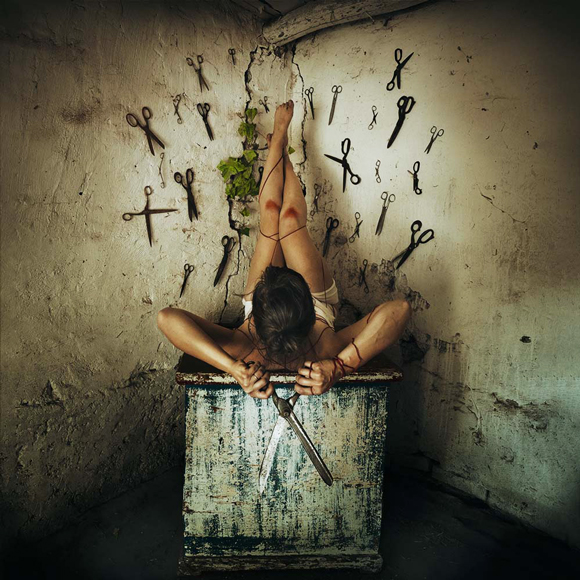
Only the beginning by Veronika Lavey
This is another image I made with the same box of scissors in a derelict outdoor shed.
Don’t be afraid to reuse what you have, be it location, costumes or props. There are so many ways to make these look different in each image and even more stories lurking behind each element.
Costumes
All of my costumes have come from charity shops, eBay, second-hand vintage shops or boot sales, or are in fact old bits of curtains, fabric, or sometimes bandages.
The most expensive outfit I have was about £30. It’s a vintage wedding dress I bought on eBay that I have now worn for two images.
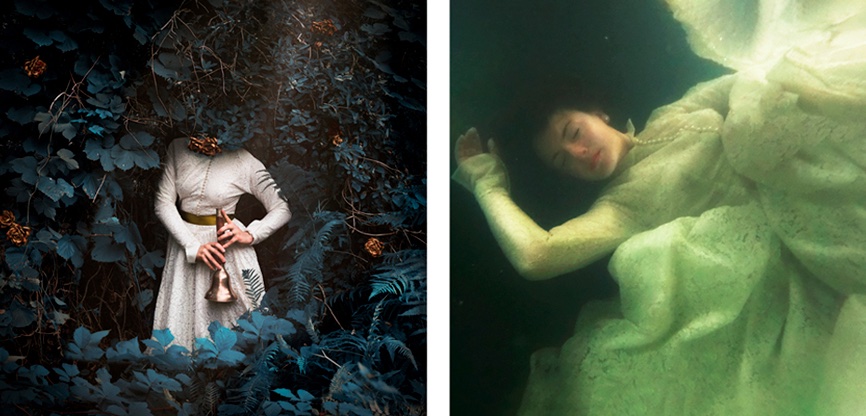
By morning the leaves will fall into silence & Breath extended by Veronika Lavey
The important thing is that whatever you decide to wear for your image must be appropriate for your message and fit the right era, if any.
I like my self-portraits to have a feeling of timelessness, so I stay away from modern clothing or anything too specific and instead choose pieces that could be placed anywhere, at any time.

Image by Glenn Dene
You may, however, have other ideas. Photographer Glenn Dene here used a superhero costume to emphasise the strength needed when going into battle for your own mental health.
Location
The setting you choose for your self-portrait will help you create the atmosphere you’re aiming for.
It may also be a special location that has a particular significance to you that will add an extra layer to the meaning of the image.
And no, you don’t need to rent out fancy castles or build elaborate, expensive sets to tell your stories.
I have never paid for a location. All of mine have been free to use.
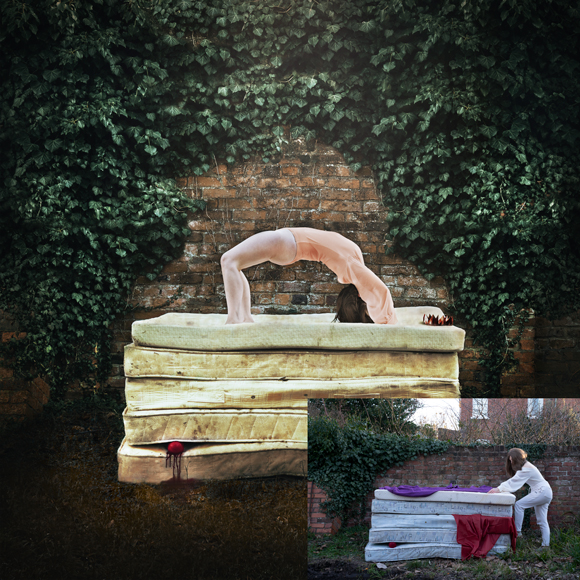
For this image called ‘A twisted tale’ I used old mattresses chucked out of a house undergoing renovation. My take on The Princess and the Pea.
Yes, I did ask for permission to go into the garden. Yes, I had a shower straight after getting home.
Consider your own garden, a field, your local park, the woodland, an abandoned building (do be careful and think of your safety first in all circumstances!), the rocks by your local beach, etc…
One of the main points to consider is what kind of lighting you’re comfortable using and whether you would be able to use it at your chosen location.
Personally, I only ever use available natural light, mostly in nature. I have to be mindful of the time of day I go to shoot to make sure I work on an overcast day for even lighting.
Another favourite spot of mine to shoot in is my garage door. The most gorgeous light!

Let the Hunt Begin!
So, your challenge of the day is to look through your house, room by room, and take your time to really see what you have available already.
Seriously. Take your time. Analyse objects and ask yourself, “How can I use this to tell my story?”.
You don’t have to use anything for its original purpose. An egg can become a head, a bush can become an autumnal skirt, wallpaper pattern can transfer itself onto skin.
I guarantee you’ll find enough to fill a hefty portfolio with your resulting images created from just what you have lying around.
Consider going on a secondhand shop crawl, boot sale or garage sale and see if anything inspires a story you might like to tell.
It’s all fun stuff!
With a bit of creativity and a whole lot of imagination, you’ll be able to express yourself through your self-portrait photography, regardless of budget.
Practice coming up with ideas that can be achieved without breaking the bank.
The more you do it, the easier it will become to see what you can accomplish to create meaningful (and wallet-friendly) self-portraits.

Check out these 8 essential tools to help you succeed as a professional photographer.
Includes limited-time discounts.
Veronika Lavey is a multi-cultural artist specialising in conceptual self-portraiture. She is recognised for her dark, thought-provoking fine art photography.
When Veronika doesn’t have a camera or a paint brush in her hands, she’s most likely walking her giant fluffy dog, Sonic in the woods, or hanging out with her family.





